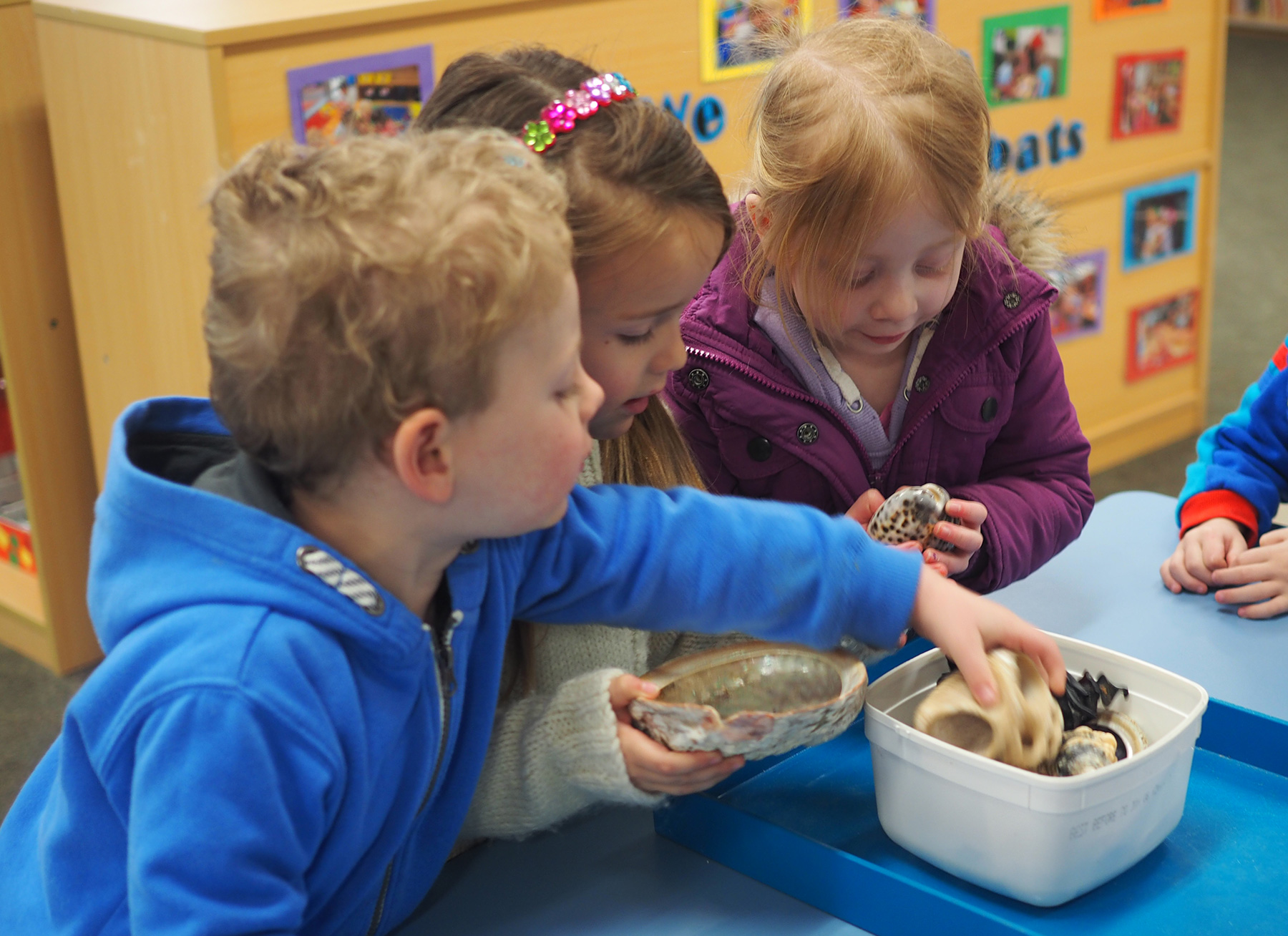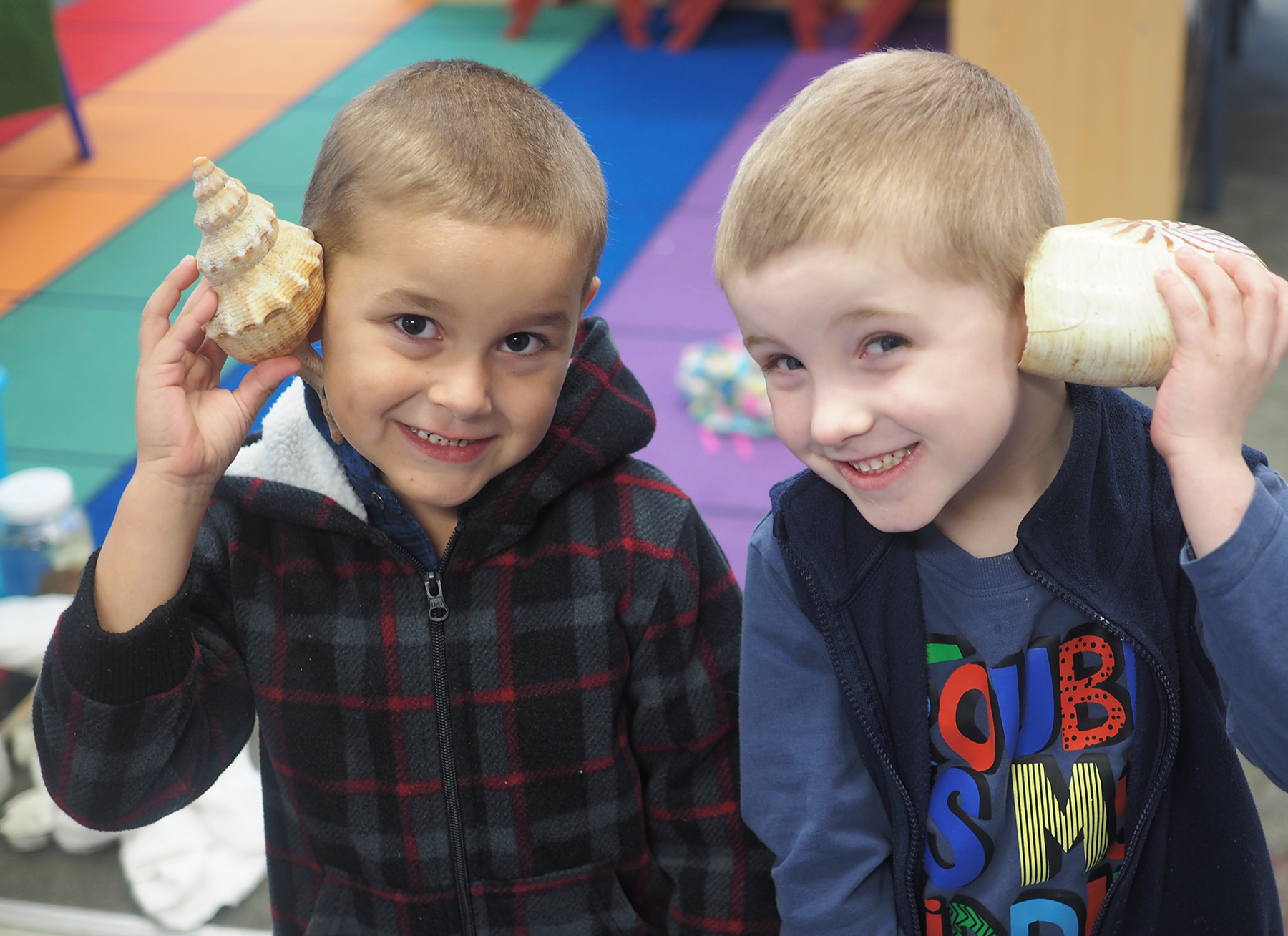Firstly, the children brainstormed everything they know about the sea, questions they wanted answers to and animals they wanted to know more about. To help with their research and investigation a range of books were sourced including sea stories and encyclopaedias. They also researched information using the internet and watched informative videos online.
Six weeks of discovery, the children researched different types of sea animals including whales, sharks, crustaceans, dolphins, fish and more.
To help with their research and investigation a range of books were sourced including sea stories and encyclopaedias. They also researched information using the internet and watched informative videos online.

Stage 1 - Curiosity
"What else lives in the ocean?"
This was shared at morning tea with the peers on her table. Morning tea is an important part of the day as it encourages social interactions and language skills as the children communicate and share thoughts, ideas and stories with their peers.

Stage 2 - Sharing Ideas
“Star fish, octopus and whales live in the ocean”
During the first week the children came together in group times and discussed and brainstormed all they knew and what they wanted to know about the sea. This was documented in mind maps, lists and columns where we explored language and literacy skills.

Stage 3- Research and investigation
“The coral are alive, but they grow very slowly”
Using our shared ideas, we dove into our investigation discovering the life under the sea. We used information books, fact sheets, diagrams, and online research including videos and information to gain a new knowledge about sea animals. We discovered facts about animals, their diets, the purpose of coral, how sand is formed and an important topic pollution.

Stage 4- Conclusions
“We need to make sure the plastic bags don’t get stuck on the turtles… Save all of the turtles”
As a group, the children discussed how to help protect the ocean and animals, this supported a greater appreciation from the children for their environment and community. The children used their expressive language and memory recall skills to explain this new concern to their peers and families, urging everyone to look after and take care of our ocean. As Mia said We used all of this new knowledge, information and vocabulary to engage in new play indoors building constructions of animals and sea life. Also to engage in lasting discussions where we shared facts, thoughts and ideas with our peers. Furthermore we created detailed visual representations of this information and enjoyed a hands on experience with the coastal environment centre. The children created detailed artworks to represent their new knowledge and understandings. These were displayed for families and sent to the costal environment centre.







